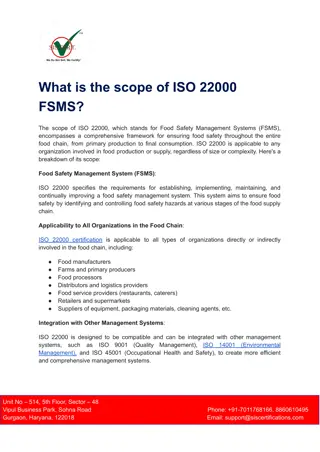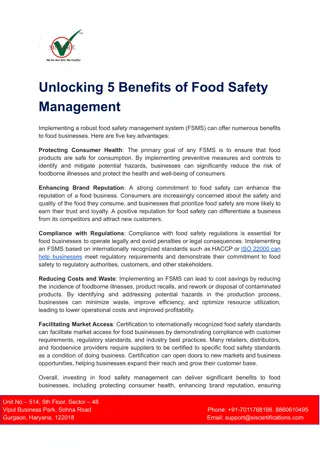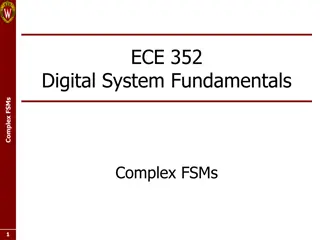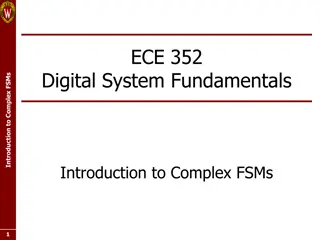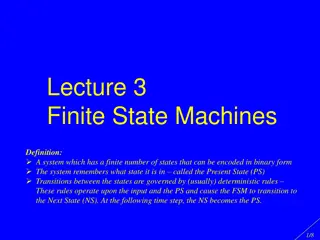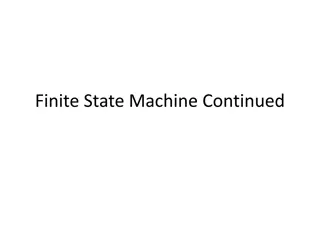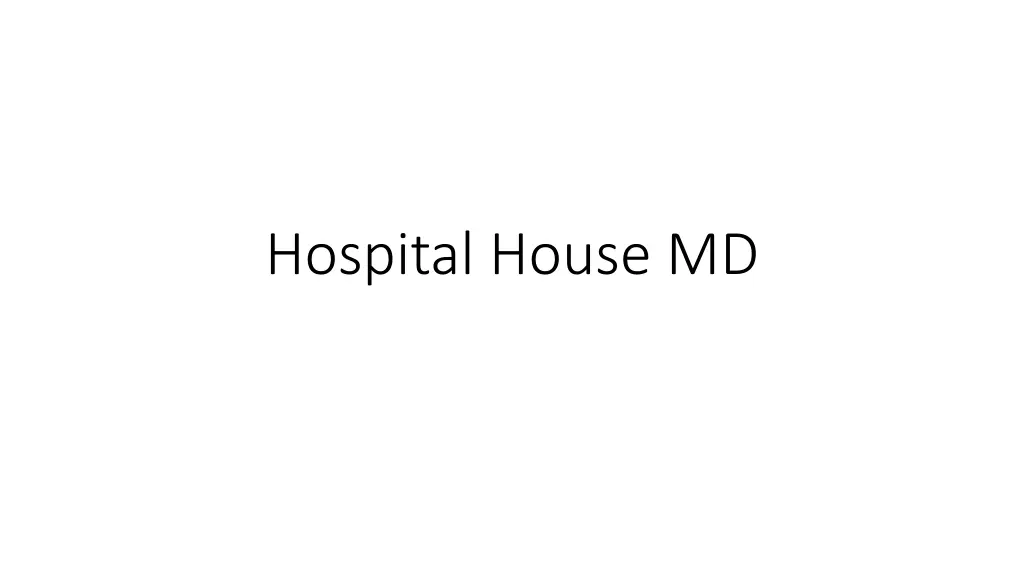
Rare Symptoms Hospital: Diagnostic and Treatment Procedures
Hospital House MD is a specialized facility that accepts patients with rare symptoms. The hospital follows a structured approach to diagnosis and treatment, ensuring that all procedures are carefully approved by the head doctor. Learn about the detailed FSM of diagnosis and applied treatment stages in this unique medical setting.
Uploaded on | 1 Views
Download Presentation

Please find below an Image/Link to download the presentation.
The content on the website is provided AS IS for your information and personal use only. It may not be sold, licensed, or shared on other websites without obtaining consent from the author. If you encounter any issues during the download, it is possible that the publisher has removed the file from their server.
You are allowed to download the files provided on this website for personal or commercial use, subject to the condition that they are used lawfully. All files are the property of their respective owners.
The content on the website is provided AS IS for your information and personal use only. It may not be sold, licensed, or shared on other websites without obtaining consent from the author.
E N D
Presentation Transcript
HospitalHouseMD HospitalHouseMD - - EDG HospitalHouseMD is a hospital that accepts patients with rare, and often unexplainable symptoms. Patients are assigned one or more doctors, which try to make a diagnosis for the sick patient. For each illness HospitalHouseMD has a database with all possible treatments. These treatments can be applied to any diagnosis and are accordingly executed. Template Treatment, as described in the handbook/ database Applied Treatment, i.e. the treatment as it will be applied to a patient.
FSM of Diagnosis To keep everything under control, the head doctor has to approve the diagnosis made by another doctor before any treatment can happen.
Diagnosis FSM While the requirements are relatively clear about approval, the requirements about an unapproved diagnosis are not clear. Is this the same as an "exists" diagnosis ? Can the AppliedTreatment already be created (proposed) in the exists state, to be executed in the approved state? Several solutions are thus possible depending on the answers to the above questions. This solution assumes that 1. 'exists' is not the same as 'disapproved' 2. that in the 'exists' state the treatments can already be added to the diagnosis but not yet "happen". That distinction needs then to be managed in the BP Layer. If this assumption is wrong, the MEcrAppliedTreatment and MEendAppliedTreatment methods need to be removed from the self- transition in the exist state
FSM of Applied Treatment An applied treatment can go through three stages. The first stage is the weakest treatment. In this stage, no consent is necessary by the patient, and the applied treatment can start immediately. When this doesn t work, the applied treatment needs to move to stage 2 or even directly to stage 3, according to the rules described below. To move the applied treatment from stage 1 to another stage, consent is needed by the patient. The patient needs to sign a form indicating his/her consent to move his/her applied treatments to a higher stage. Once this consent has been given, any applied treatment for that patient can be moved to a higher stage, without the need to ask consent again. So, once a consent is signed by the patient, all applied treatments can freely upgrade from stage 1 to 2 and 3, until the patient retracts his/her consent. Patients with an applied treatment in stage 3 require a higher follow-up rate and will be checked more often by nurses and doctors. Once the higher follow-up rate isn t needed anymore for a specific applied treatment for a patient, the applied treatment can downgrade again to lower stages (downgrading is the responsibility of the doctor). Remark: the word "applied" has been added to the text to clarify that this behaviour describes what happens to the specific treatment of a patient, what was called "AppliedTreatment" in de EDG. This is not the behaviour of the "template" Treatment (called "Treatment" in the EDG).
FSM of Illness Illnesses also get a priority score, this is necessary to prevent any outbreaks from e.g. unknown viruses. The priority score of an illness can change at any given time. For now HospitalHouseMD only has two priority scores: high and low. When an illness gets priority score high, all applied treatments for that illness are immediately placed into stage 3, by means of a priority stage upgrade. No consent of the patients are needed to move the treatment to stage 3 when the priority score of the illness is high.
FSM of Patient The patient needs to sign a form indicating his/her consent to move his/her applied treatments to a higher stage. Once this consent has been given, any applied treatment for that patient can be moved to a higher stage, without the need to ask consent again. So, once a consent is signed by the patient, all applied treatments can freely upgrade from stage 1 to 2 and 3, until the patient retracts his/her consent.
FSMs of Doctor and Treatment Default FSMs

